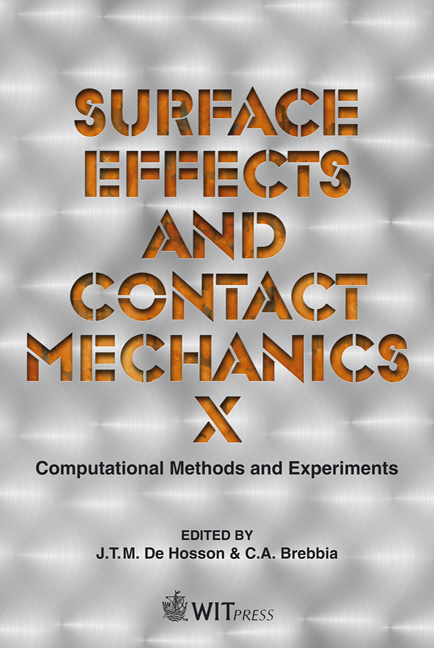Multiscale Interpretation Of Contact Problems
Price
Free (open access)
Transaction
Volume
71
Pages
12
Page Range
109 - 120
Published
2011
Size
2,945 kb
Paper DOI
10.2495/SECM110101
Copyright
WIT Press
Author(s)
P. Brož
Abstract
Analysis of interactions between discrete and granular media demands larger computational mines. It is advantageous to employ for discrete systems with diffuse non-smoothness a domain-decomposition-like method. Concurrently, the numerical strategy is enriched by means of multiscale methodology to heal differences between discrete and continuum versions. To assess the said techniques, the balance of a tensegrity construction is selected. To express an idea of representative elements respective to the continuous medium homogenized variables are introduced. The late developments in the numerical interpretation of large multicontact problems demand multiprocessor computers to obtain allowable computer time modellings. Contact stipulations result in non smooth mathematical formulations of steady-state and dynamical problems appearing from structural and granular mechanics. The examples of solvers as the Non Linear Gauss Seidel algorithm and the Conjugate Projected Gradient method were developed adaptable to a parallel treatment. The domain decomposition procedures permit one to go into large-scale mechanical problems, and their effectivity was demonstrated for linear tasks. Keywords: beam, cable, granule, homogenization, non-smoothness, space frame, surface and volume representative elements. 1 Introduction If variables in mechanical problems are independent between them, an easy distribution of the computations on different processors is effective; that implies that the problem is simply divided into many independent subproblems. The transition from large scale contact formulations to multilevel ones seems to be
Keywords
beam, cable, granule, homogenization, non-smoothness, space frame, surface and volume representative elements





